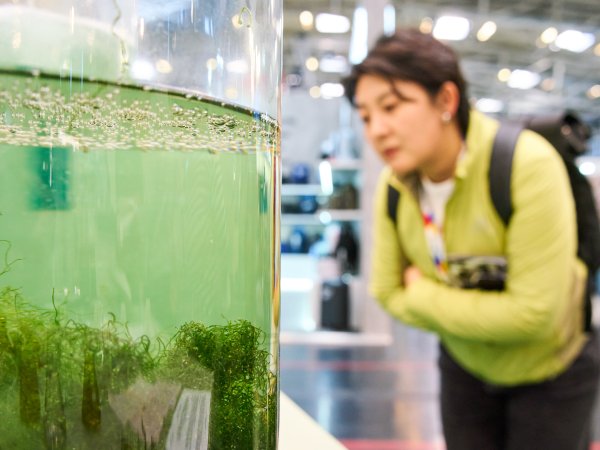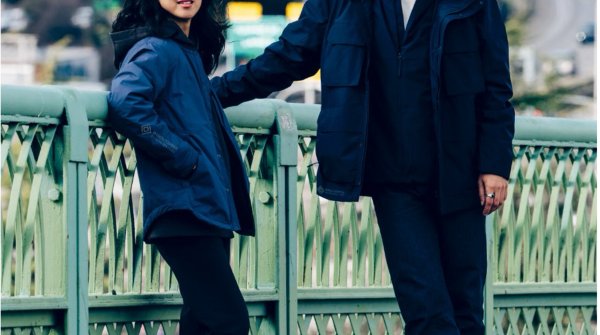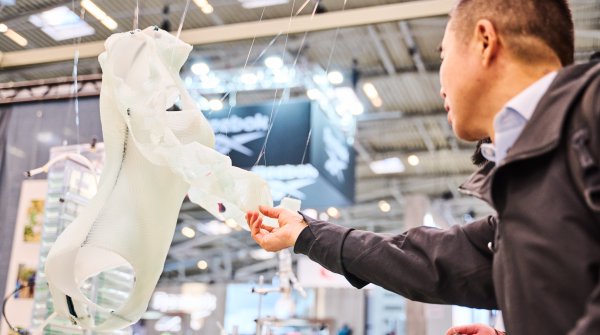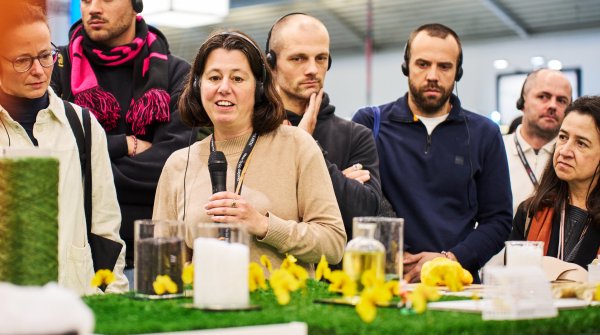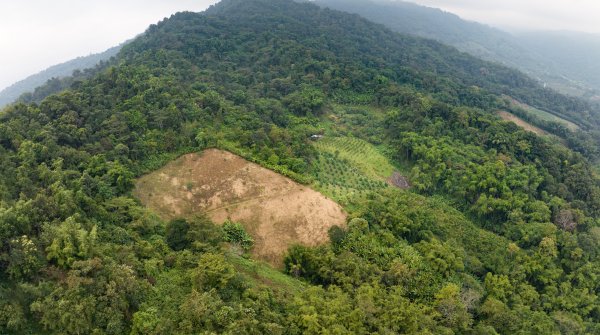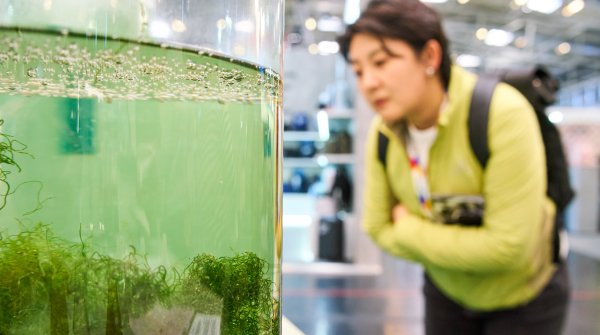With ongoing advancements in research and biotechnology, the production of materials derived from bacteria is becoming a more practical and scalable option. This innovation offers to the sports industry a pathway to reduce fossil-based resources dependency and supports the transition toward a circular economy. According to The Enterprise European Network 2025 textile sector group report:
By 2030 we need to live in a world in which 1 in 5 garments are traded through circular.
- Biosourced Textile: The meeting of innovation and biology as all biosource processes are led in laboratories. It could be a textile material primarily made from natural, renewable resources such as plant fibers, (eg: fruit’s peels…) animal by-products, or marine co-products (eg: mussel’s byssus). All those are becoming biomass. Biosourced textiles are designed to be durable, lightweight, recyclable, and often produced without chemical treatments
- Bioeconomy: The sector encompasses the production, transformation, and valorization of bioresources for efficient and sustainable use. In textiles, this includes sourcing, processing, and recycling bio-based materials to reduce environmental impact.
- Biotechnology: The use of biological processes, such as enzymes, to modify or finish textile fibers and fabrics, enhancing properties or reducing environmental impact.
- Non-woven Biosourced Textile: A textile produced by bonding or interlocking biosourced fibers (e.g. byssus from mussels) without weaving or knitting, offering properties like thermal insulation, acoustic absorption, and recyclability.
- BC is for bacterial cellulose.
At ISPO, the Bacteria Spotlight in the Material Lab explores how bacteria are shaping the future of circular materials. From cultivation to application, it highlights real-life examples like natural dyes, textiles and yarns, leather alternatives, and other sustainable innovations based on bacterial processes for the sports industry and beyond. - Leonhard Nima, Founder Studio Nima
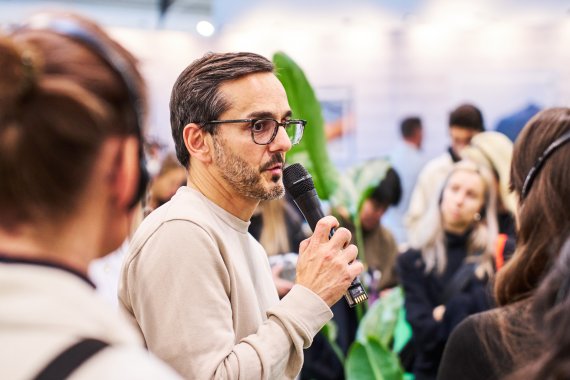
When we talk about bacterial industrial processes, we talk about Biofabrication. Combined with Biotech we can imagine the future of fashion. An increasing number of startups and companies are harnessing the potential of bacteria-based materials, leveraging their capacity to deliver more eco-friendly solutions. According to Geraldine Wharry, Fashion Futurist and Regenerative Futures Architect who studies the future of fashion: “If Fashion wants to keep a seat at the table of big industries that are changing the world such as tech, construction, food and agro, then it needs to get serious about biosourcing and biotech. “Biotech is the new digital” to quote Nicholas Negroponte, founder of the MIT Media Lab, who stated this back in 2017.” Today, the application in the textile industry is already going forward through bioplastics, biofilms, fibers, and pigments innovations.
I can see this as a Fashion Futurist who has been covering this for almost 15 years. Bacterial industrial processes are not evolving at the speed they should, in comparison to other industries such as Food and Beauty who have successfully brought these lab grown innovations to mass market consumption. - Geraldine Wharry, Fashion Futurist & Regenerative Futures Architect
All steps of Biofabrication case are listed below:
Application Area
Bacterial Function
Sustainability Impact*
Dyeing
Production of natural pigments
Reduces water/chemical use, biodegradable
Material Production
Growth of nanocellulose fibers
Low-carbon, strong, lightweight textiles
Finishing
Enzymatic pre-treatment and softening
Reduces chemical usage
Wastewater Treatment
Biodegradation of pollutants
Cleaner effluent, lower environmental impact
Textile Hygiene
Biofilm formation, odor management
Informs design for better hygiene, less water use if less need of washing the garment
*These are general impacts, for each and every source, impact has to be studied by metrics and confirmed with certifications or norms.
Then find out how ISPO brings together all the players - sports brands, manufacturers, technology providers, material suppliers, scientists and consultants - and creates the space in which real sustainability solutions are created.
For years, the safe discharge of water has posed a significant challenge for dyeing operations in the textile industry, which is a major contributor to water pollution worldwide. The sector is responsible for about 20% of global industrial wastewater pollution, ( EEN 2025 textile sector group report). In China, this represents 70% of rivers and lakes.
Mainly due to dyeing and finishing processes that often release untreated effluents into rivers and streams.. Synthetic fibers (polyester, nylon, etc.) release microplastics when clothes are washed: 500,000 tons of microplastics are released into the oceans each year, or 35% of marine microplastics. That’s partly why they are included in the Footprint data requested by the European Union. So all dye, finishing, sanitizing, but also all textile fiber culture and harvest asking for less water use, are very welcomed to improve this huge problem.
The famous quote from Vivienne’s Westwood “Buy less. Choose well. Make it last” can also perfectly fit the production and sourcing choice industry has to face right now.
One of the main applications of biofabrication are finishing and dyes. Knowing that one of the main focus to reduce impact must be on the supply chain, bacteria offer promising solutions for addressing dye pollution in the textile industry, primarily through two mechanisms:
- Biodegradation: Bacteria enzymatically break down complex dye molecules into simpler, less hazardous compounds. This process can lead to complete mineralization of dyes, reducing their environmental impact.
- Biosorption: Dyes are adsorbed onto the surface of bacterial cells, effectively removing them from wastewater, though the dye structure remains intact.
Both pure and mixed bacterial cultures have been used, with mixed consortia often showing higher efficiency due to synergistic effects.
Recent innovations are BC nanofibers used to coat fibers, yarns, or fabrics, enhancing surface area and imparting properties like increased water absorption, mechanical strength, or even hydrophobicity after chemical modification. These coatings can improve technical textiles and wearables. Among solutions for dye, we can quote Everdye ™, Colorifix™ or Lite-1.bio™. For Lite 1 bio, the process is based on transforming the textile dye industry by producing sustainable, high-performance colorants using biotechnology. Their approach harnesses microbes to convert bio-waste into vibrant, eco-friendly pigments through a circular, low-impact process. Lite-1’s dyes are grown in bioreactors, similar to brewing, and can be seamlessly integrated as drop-in solutions into existing manufacturing workflows, making adoption easy for brands and manufacturers.
In addition, as a brand posture, colors are not only linked to innovation and impacts but also to emotions, culture of aesthetics and spirit of the time. And maybe more…
Color is no longer just visual, it’s emotional, sensorial, and increasingly, a tool for healing. I believe the next frontier of color lies at the intersection of neuroscience and aesthetics. - Cécile Poignant, prospectivist & future strategist, in the podcast the color authority by Juliet Van Vulliet
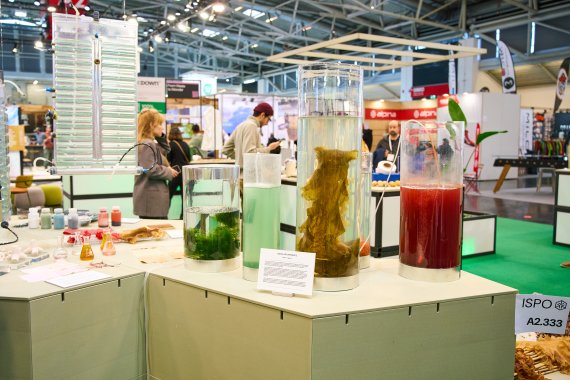
Some interesting examples of biofabrications have been recently revealed in the textile industry. Those start ups are probably all taking inspiration from the pioneer Suzanne Lee, founder of Biofabricate™ in London and her experimentation on Biocourture for grown your own clothes.
BC is being developed as a sustainable, biodegradable alternative to leather. As an alternative to leather, its material properties are interesting as long as this coating is not a basic PU. Among its assets: high purity, flexibility, tensile strength, and nanofibril network structure, making it suitable for fashion products, accessories, and footwear. Companies and research groups have produced prototypes of clothing and accessories using BC, which can be grown into desired shapes, supporting low - or zero-waste manufacturing concepts. Another example is Modern Meadow™ working on bags and leatherworking.
When we look at markets using biotech & biofabrication we see the success of the beauty sector. Geraldine Wharry confirms that, compared with the beauty sector, which has shown that it is breaking down the barriers between scientific innovation and commercial viability, fashion is eager to scale these solutions and, as an industry, has the capability to make it happen.
The problem is the fashion industry is incredibly slow to adapt to the innovations taking place and treats this still as an emergent innovation, and worse in some cases as media sound bites. By not scaling fashion is losing. - Geraldine Wharry, Fashion Futurist & Regenerative Futures Architect

As a conclusion, bacteria are one central topic to advancing sustainability, efficiency, and innovation in textile sourcing, offering solutions that address environmental needs. Even if brand commitment remains limited, with many pioneering brands and manufacturers facing challenges in scaling up or attracting significant investment.
According to Leonhard Nima from Studio Nima who collaborates with ISPO:
On the input side, there are generally no limits - it is all about logistics and supply chains there, we globally certainly have plenty of biosources and agricultural waste to work with. We see many material innovators developing promising solutions already. The bigger obstacles arise on the output side. One of the biggest challenges many of the material innovation start-ups face is securing the backing of major brands or manufacturers to help bring their materials to full market readiness and into market. The high performance requirements and price competitiveness also remain a major hurdle.
With ongoing advancements in research and biotechnology, the production of materials derived from bacteria is becoming more practical. Biofabrication starts to be considered as a scalable option, especially in circular systems. With more developments, this innovation offers the sports industry a pathway to reduce its dependence on fossil-based resources and to support the transition toward a circular economy. And to go further on, what if the bio-inspired innovation journey, were meeting up with an AI-driven library of actionable strategies derived from biology and translated into practical solutions.
More about innovative bacteria-driven materials and sustainable solutions awaits you at ISPO 2025, the international flagship event of the global sports business. The Material Lab as a part of the Sustainability Hub provides a unique platform to discover groundbreaking technologies, like bacteria-based materials, aimed at reducing the CO₂ footprint in the sports sector. Experience these innovations firsthand and gain exclusive insights from industry experts. At ISPO, you find out how to stay ahead of trends, integrate biodegradable materials into your products and drive sustainability in sports production. Be part of a greener future - from 30. NOV. - 02. DEZ. in Munich.
- ISPO awards
- Mountain sports
- Bike
- Design
- Retail
- Fitness
- Health
- ISPO Job Market
- ISPO Munich
- ISPO Shanghai
- Running
- Brands
- Sustainability
- Olympia
- OutDoor
- Promotion
- Sports Business
- ISPO Textrends
- Triathlon
- Water sports
- Winter sports
- eSports
- SportsTech
- OutDoor by ISPO
- Heroes
- Transformation
- Sport Fashion
- Urban Culture
- Challenges of a CEO
- Trade fairs
- Sports
- Find the Balance
- Product reviews
- Newsletter Exclusive Area
- Magazine
